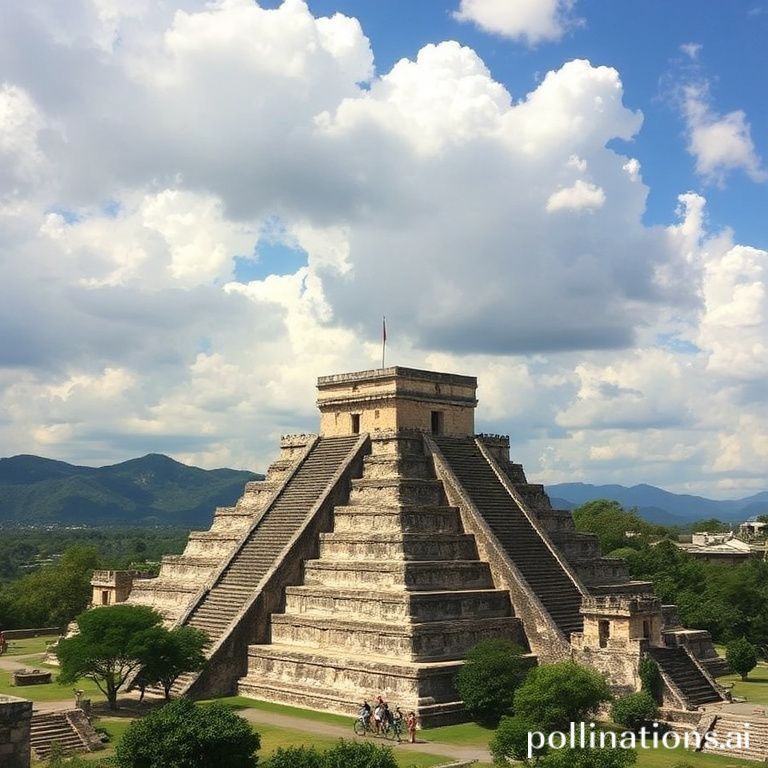The Aztec Empire, a civilization renowned for its complex social structure, impressive artistic achievements, and sophisticated understanding of mathematics and astronomy, dominated Mesoamerica from the 14th to 16th centuries. At the heart of this powerful empire lay Tenochtitlan, a magnificent city built on an island in Lake Texcoco. This article provides a brief history of Tenochtitlan, tracing its origins, rise to power, and eventual fall, offering insights into the remarkable story of the Aztec people.
Understanding the Aztec Empire requires delving into the unique circumstances that led to the founding and development of Tenochtitlan. This city wasn’t merely a capital; it was the embodiment of Aztec ambition, ingenuity, and spiritual beliefs. Its story is inextricably linked to the larger narrative of Mesoamerican history, filled with both triumphs and tragedies.
The Founding of Tenochtitlan
According to Aztec legend, the Mexica people, the ancestors of the Aztecs, were a nomadic tribe from Aztlán, a mythical place in the north. Guided by their god Huitzilopochtli, they embarked on a long and arduous journey to find a new homeland. The prophecy foretold that they should settle where they found an eagle perched on a cactus, devouring a serpent. In 1325, after centuries of wandering, they witnessed this sign on a swampy island in Lake Texcoco, and there, they founded Tenochtitlan.
Challenges and Ingenuity
- Building a city on a lake presented significant engineering challenges. The Aztecs ingeniously developed a system of chinampas, or “floating gardens,” to create fertile land for agriculture.
- They also constructed causeways to connect the island to the mainland, facilitating trade and transportation.
- Aqueducts were built to bring fresh water from distant springs, ensuring a reliable water supply for the growing population.
Rise to Power and Expansion
Initially, Tenochtitlan was a small and relatively insignificant settlement. However, the Aztecs were skilled warriors and shrewd diplomats. In the early 15th century, they formed a triple alliance with the city-states of Texcoco and Tlacopan, consolidating their power and embarking on a period of rapid expansion. Through military conquest and strategic alliances, the Aztec Empire extended its dominion over a vast territory encompassing much of central Mexico.
The Aztec Economy and Society
- Tenochtitlan became the center of a thriving economy, fueled by tribute from conquered provinces. Goods such as food, textiles, and precious metals flowed into the city, enriching its inhabitants.
- Aztec society was highly stratified, with a noble class, warriors, priests, merchants, and farmers. Social mobility was possible through military achievements or service to the state.
- Religion played a central role in Aztec life. The Aztecs worshipped a pantheon of gods, with Huitzilopochtli, the god of war and the sun, being particularly important. Human sacrifice was practiced as a way to appease the gods and ensure the continued prosperity of the empire.
Tenochtitlan at its Zenith
By the early 16th century, Tenochtitlan had grown into a magnificent metropolis, one of the largest and most impressive cities in the world. It boasted towering temples, grand palaces, bustling marketplaces, and meticulously planned residential areas. The city was a testament to Aztec engineering prowess and artistic vision.
Impressions of Visitors
- Spanish conquistadors, who arrived in 1519, were awestruck by the splendor of Tenochtitlan. They described the city as being comparable to the finest European capitals.
- The Great Temple, or Templo Mayor, dedicated to Huitzilopochtli and Tlaloc, the god of rain, dominated the city’s skyline. It was a massive pyramid adorned with intricate carvings and sculptures.
- The city’s marketplaces teemed with activity, offering a wide array of goods from all corners of the empire.
The Fall of Tenochtitlan
The arrival of the Spanish conquistadors under Hernán Cortés marked the beginning of the end for the Aztec Empire. Initially, the Aztecs welcomed the Spanish, believing them to be envoys of the god Quetzalcoatl. However, tensions soon escalated, leading to open conflict.
Factors Contributing to the Downfall
- The Spanish possessed superior weaponry, including guns, cannons, and steel armor.
- They also formed alliances with indigenous groups who resented Aztec rule.
- Perhaps the most devastating factor was the introduction of European diseases, such as smallpox, which decimated the Aztec population.
After a long and brutal siege, Tenochtitlan fell to the Spanish in 1521. The city was largely destroyed, and the Aztec Empire came to an end. On the ruins of Tenochtitlan, the Spanish built Mexico City, which became the capital of New Spain.
Conclusion
The history of Tenochtitlan is a compelling narrative of ambition, ingenuity, and resilience. From its humble beginnings on a swampy island to its rise as the center of a powerful empire, the city stands as a testament to the remarkable achievements of the Aztec people. Although Tenochtitlan was ultimately destroyed, its legacy lives on in the culture, art, and history of Mexico. Understanding the story of Tenochtitlan provides valuable insights into the complexities of Mesoamerican civilization and the enduring impact of the Aztec Empire.
If you found this historical exploration fascinating, consider sharing this article with fellow history enthusiasts and delve deeper into the rich tapestry of Mexican culture through our other articles on Life in Mexico!
IMAGE: A digital painting depicting the Aztec city of Tenochtitlan at its peak. The scene is vibrant and bustling with activity. The Great Temple (Templo Mayor) dominates the skyline, adorned with colorful banners and intricate carvings. Chinampas (floating gardens) surround the city, creating a lush and fertile landscape. People in traditional Aztec clothing are shown trading in the marketplace and performing religious ceremonies. The overall mood is one of grandeur, prosperity, and cultural richness. The sky is a clear blue, and the sun casts a warm glow over the city. Style: Realistic, historical, detailed.


